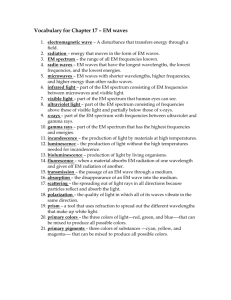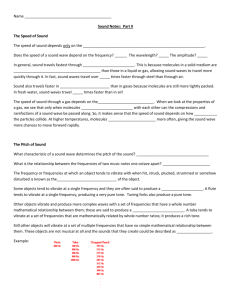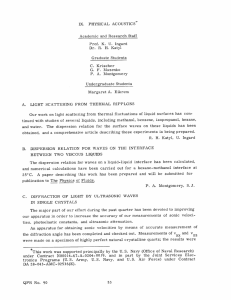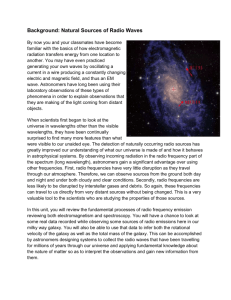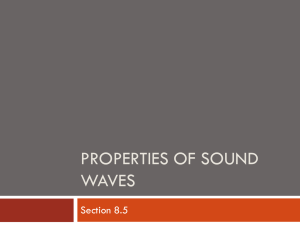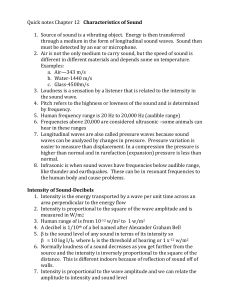Acoustics
advertisement
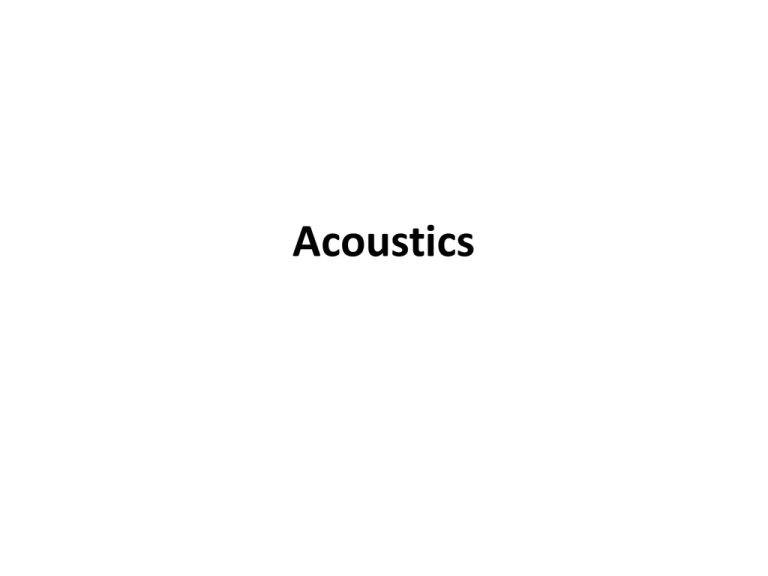
Acoustics Acoustics Acoustics is the interdisciplinary science that deals with the study of all mechanical waves in gases, liquids, and solids including vibration, sound, ultrasound and infrasound. The word "acoustic" is derived from the Greek word ἀκουστικός (akoustikos), meaning "of or for hearing, ready to hear". The scientific study of the propagation, absorption, and reflection of sound waves is called acoustics. Sound, ultrasound, infrasound The entire spectrum can be divided into three sections: audio, ultrasonic, and infrasonic. Sound is a mechanical wave that is an oscillation of pressure transmitted through a solid, liquid, or gas, composed of frequencies within the range of hearing and of a level sufficiently strong to be heard. The audio range falls between 20 Hz and 20,000 Hz. The ultrasonic range refers to the very high frequencies: 20,000 Hz and higher. This range has shorter wavelengths which allows better resolution in imaging technologies. Medical applications such as ultrasonography and elastography rely on the ultrasonic frequency range. On the other end of the spectrum, the lowest frequencies are known as the infrasonic range. These frequencies can be used to study geological phenomena such as earthquakes. Physics of sound The mechanical vibrations that can be interpreted as sound are able to travel through all forms of matter: gases, liquids, solids, and plasmas. The matter that supports the sound is called the medium. Sound cannot travel through a vacuum. Sound is transmitted through gases, plasma, and liquids as longitudinal waves, also called compression waves. Through solids, however, it can be transmitted as both longitudinal waves and transverse waves. Longitudinal sound waves are waves of alternating pressure deviations from the equilibrium pressure, causing local regions of compression and rarefaction. Matter in the medium is periodically displaced by a sound wave, and thus oscillates. Sound wave properties and characteristics A musical tone is a steady periodic sound. A simple tone, or pure tone, has a sinusoidal waveform. A compound tone is any musical tone that is not sinusoidal, but is periodic, such that it can be described as a sum of simple tones with harmonically related frequencies. A noise results from non-periodic vibrations (statistically random vibration) Objective sound wave characteristics • • • • • • • • Frequency, or its inverse, the period Harmonic Content (Harmonic spectrum) Intensity Amplitude Waveform Wavelength Speed (velocity vector) Direction (wave vector) Harmonic Content (Harmonic spectrum) Sound Intensity. Sound Pressure Threshold of Hearing. Threshold of Pain Subjective sound perception • Sounds may be generally characterized by pitch, loudness, and quality. Equal Loudness Curves Ear and Hearing The Outer Ear The Tympanic Membrane "Rule of Thumb" for Loudness




